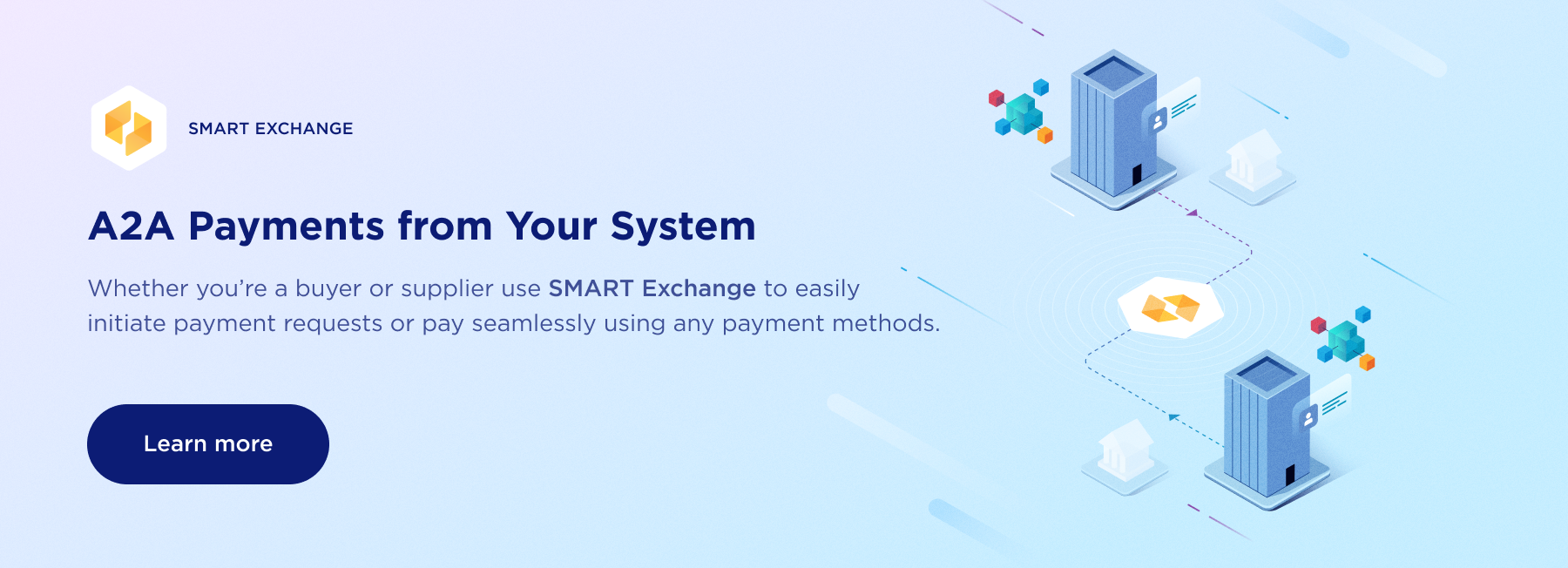The new reality has exposed and exacerbated friction in the way that business gets done.
- 65% of businesses say their average days late has increased
- 55% of businesses have experienced a spike in Days Sales Outstanding (DSO)
- 55% of businesses say their aging balance is higher
- 19% of businesses report more bad debt
- 6% of businesses have experienced more customer disputes
Three Main Challenges for B2B Payments
These statistics from the Institute of Finance and Management (IOFM) illustrate the significant operational and financial challenges that businesses face in buying and selling goods. While the economic downturn is largely to blame for these challenges, payment inefficiencies do not help.
The way that businesses make and receive payments are broken in three fundamental ways:
Inefficient Payment Processes
Paying other businesses is harder than it should be. Closed loop networks and bilateral integration limit automated invoice processing. Managing multiple logins and passwords, account requirements, file formats, and proprietary integrations only adds to the inefficiencies for accounts payable departments.
That is a big reason that 30 percent of accounts payable employee time is spent on manual tasks such as keying invoice data and chasing down information [1]. Printing, stuffing, and reconciling paper checks makes matters a lot worse. These inefficient disbursement processes increase the chance of late payments. Ninety-one percent of suppliers have been paid late by their business-to-business customers [2].
Inadequate Remittance Data
Unapplied cash is a big problem for businesses. The root of the problem is that suppliers cannot count on receiving the remittance data they need for standard reconciliation. Remittance data is frequently incomplete or inaccurate.
Sixty-one percent of the time, remittance data is sent separately from the payment [3], requiring the supplier to track down the information and match it with the right payment. As a result, 35 percent of suppliers manually reconcile more than 40 percent of their invoices and payments. Receiving payments through portals has not been the panacea that they were portrayed to be.
Seventy-four percent of buyers say that reducing the amount of time they spend logging into customer portals to download remittance data is “very important” or “extremely important.[4]” And suppliers do themselves no favors by relying spreadsheets to reconcile payments.
Rising Risk
Sharing and maintaining counterparty bank account information is risky. One quarter of payables leaders fear that the way they are doing things these days is creating new risks. And disjointed systems, processes, and standards makes it hard for trading partners to be sure that the company that they are paying is legitimate. As proof, consider that $3 billion in total losses from payments were made to fraudsters through business e-mail compromise [5].
In today’s Digital Era, these challenges stand in the way of businesses returning to growth.
That is why more businesses are intrigued by account-to-account (A2A) payments automation.
How Account-to-Account Solutions Transform Business Payments
A2A solutions digitally connect buyers and suppliers through their enterprise resource planning (ERP) platforms and banks and share payment data using common rules and standards. Automating payments account-to-account uniquely addresses the friction in business-to-business commerce:
Faster Payments
Payments can be made in real-time, arriving within moments of initiation. RTP transactions also are irrevocable. Buyers are notified when supplier payments are made. And an approved Request for Payment always arrives on the date approved by the buyer.
Better Working Capital Management
Tough times require buyers and suppliers of all sizes to control their working capital tightly. The faster payments and frictionless payment posting enabled by A2A automation accelerates cashflow for suppliers while eliminating unapplied funds. Faster payments remove the possibility that buyers will face costly late payment penalties. Faster payments also provide buyers with more opportunities to capture early payment discounts.
RTP provides suppliers with visibility into when payments will arrive. And reconciling accounts in real-time using a single platform that connects trading partners’ ERP platforms enables both parties to know where they stand with their working capital, at any time. As a result, buyers and sellers can accurately forecast their cash and spending.
Greater Control Over Payments
Request for Payment enables buyers and suppliers to control the timing of payments. Request for Payment also can accelerate payments to a supplier by eliminating the latency with paper checks. And buyers can reject a Request for Payment.
Streamlined Operations
A2A automation enables richer, real-time data exchanges, putting business-critical information into the hands of suppliers with every transaction. Because they get the remittance data they need, suppliers do not need to require clarifications from buyers. Suppliers also spend less time managing exceptions and non-compliant payments.
Improved Security
Suppliers and buyers no longer need to share and store counterparty bank account details for payments, and buyers can be certain they are paying the right company.
Is your business ready for a game-changing approach to how it makes and receives payments?
If so, Transcard wants to speak with you about our A2A solution.





